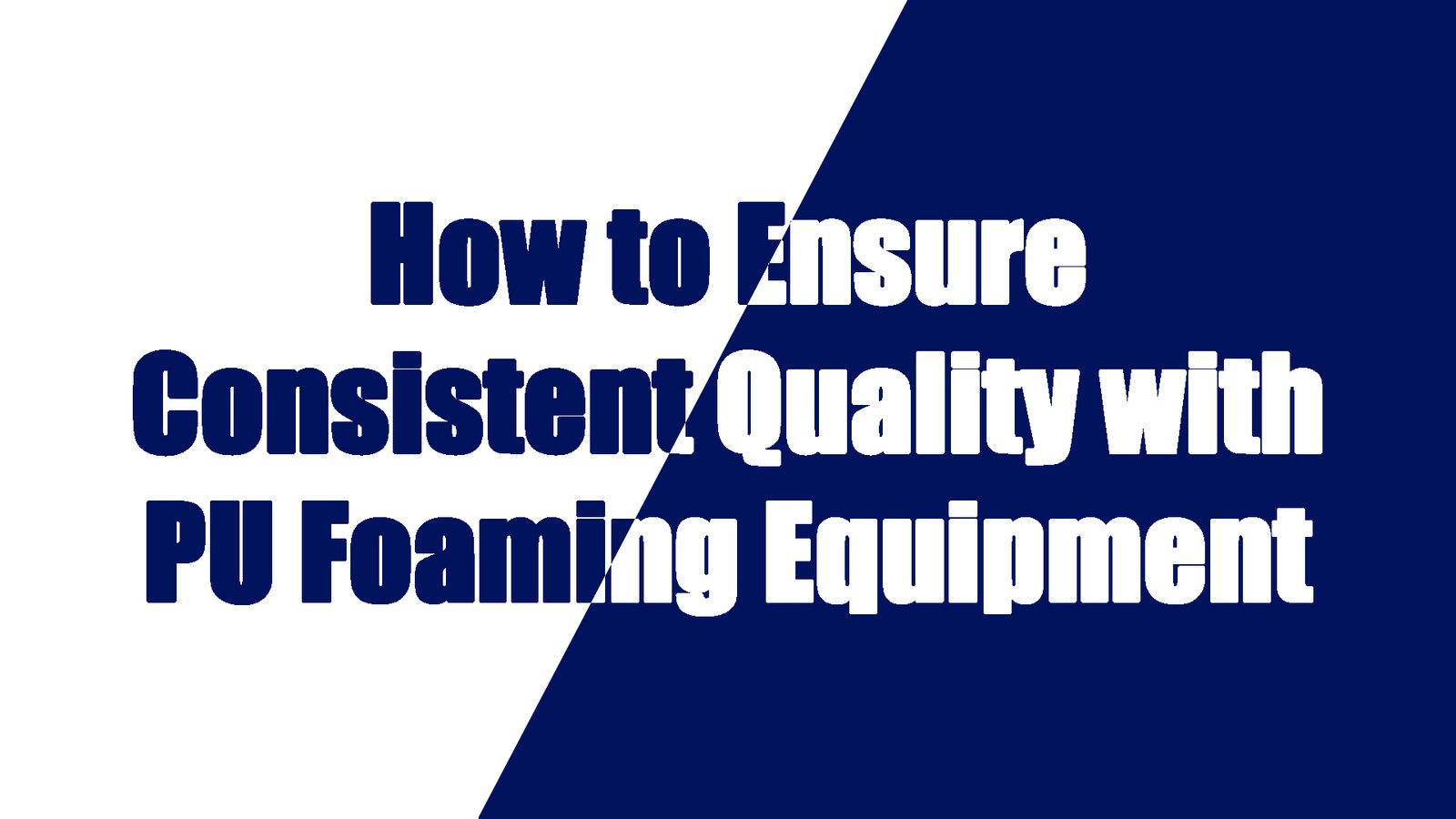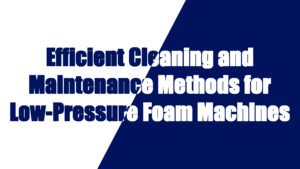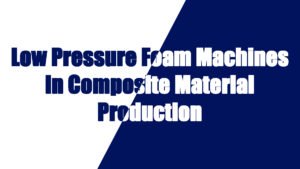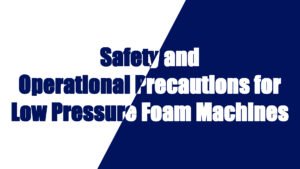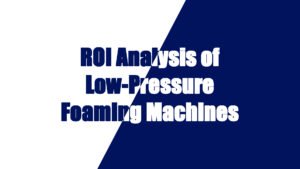The Return on Investment (ROI) for polyurethane foam equipment is one of the key factors enterprises must consider when investing in this equipment. ROI is an important indicator used to assess the long-term value and profitability of the equipment, typically measured through the following aspects:
1. Improving Production Efficiency
Enhancing production efficiency is crucial for the ROI of polyurethane foam equipment. Modern polyurethane foam equipment uses highly efficient automation control systems that optimize the production process, reduce human intervention, and increase production speed. By precisely controlling the raw material ratios, reaction time, and temperature, the equipment can achieve higher production efficiency, reduce cycle times, and increase product output.
How does improving production efficiency affect ROI?
- Shortened Production Cycles:Modern equipment accelerates the production process, reducing the time needed to produce each unit, thereby increasing overall capacity.
- Reduced Labor Costs:Efficient automation systems reduce the need for manual labor, lowering labor costs and thus improving ROI.
- Minimized Downtime: Advanced equipment often features higher stability and fewer breakdowns, reducing the losses caused by equipment failures or downtime.
2. Reducing Material Waste
In polyurethane foaming, precise raw material ratios and efficient material usage are critical. By using advanced equipment, raw material wastage can be minimized during mixing, injection, and other stages, ensuring more accurate use of raw materials in every batch.
How can waste be reduced to enhance ROI?
- Precise Mixing: High-precision dispensing systems ensure that each raw material is added in accurate amounts, preventing waste.
- Minimizing Over-Foaming:Equipment with intelligent control systems prevents excessive foaming, reducing unnecessary foam production.
- Waste Recycling:Many modern systems include waste recycling features that allow foam waste or excess material to be reused, further reducing costs.
Improving Product Quality
The quality of the product directly affects the market competitiveness and brand reputation of the company. High-quality polyurethane foam products can enhance customer satisfaction, increase loyalty, and reduce returns and after-sales service costs caused by quality issues.
How can product quality improvement boost ROI?
- Uniform Foam Density:Precise equipment control ensures consistent foam density, avoiding quality fluctuations caused by uneven densities.
- Consistent Performance: Equipment can maintain consistent foam properties, such as hardness, elasticity, and wear resistance, across all batches, ensuring product consistency.
- Lower Scrap Rates: Efficient control systems monitor every stage of production, allowing immediate adjustments to minimize scrap.
Long-Term Maintenance and Operational Costs
Long-term maintenance and operational costs for polyurethane foam equipment are also important factors affecting ROI. The durability of the equipment and its maintenance costs directly influence the company’s operating costs and profitability. The longer the equipment lasts and the lower its maintenance costs, the higher the ROI.
How can operational costs be reduced to improve ROI?
- Reduced Downtime: Modern equipment often comes with diagnostic systems that detect and resolve issues early, minimizing downtime and maximizing production efficiency.
- Extended Equipment Lifespan: Regular maintenance and proper operation can extend the equipment’s life, reducing the need for frequent replacements.
- Energy Efficiency: High-efficiency equipment typically has low energy consumption, significantly reducing energy costs during production.
How to Evaluate the Long-Term Value of Polyurethane Foam Equipment?
When assessing the long-term value of polyurethane foam equipment, it is important to consider not only the initial investment but also the following factors:
- Production Capacity and Flexibility: Can the equipment accommodate potential future changes in production needs? Can it support the production of different types of foam products?
- Market Demand and Technological Innovation: Does the equipment stay in line with market trends and technological advancements, enabling the company to quickly adapt to market changes?
- Equipment Upgrades and Improvements: Does the equipment have the capability to be upgraded, allowing for continuous improvement in efficiency and cost reduction?
ROI Calculation Methods
To assess the ROI of polyurethane foam equipment, common financial methods include:
- Payback Period:The payback period refers to the time it takes for the equipment to pay back its initial investment. By calculating the annual savings and additional revenue the equipment generates, you can estimate the time it will take to recover the investment. A shorter payback period indicates a higher ROI.
- Net Present Value (NPV):The net present value calculates the discounted cash flows from the equipment investment. If the NPV is positive, the equipment investment is deemed profitable.
- Internal Rate of Return (IRR): The IRR method calculates the internal rate of return for the equipment investment. If the IRR is higher than the company’s capital cost, the investment provides a favorable return.
ROI Calculation Services During Project Initiation
In the process of investing in polyurethane foam equipment, our company also provides ROI calculation services during the early stages of the project to help clients control their budgets. Through detailed ROI analysis, we can help clients accurately predict production costs, savings, and expected revenues, enabling them to make informed decisions and ensure maximum returns on investment.
Our ROI calculation services not only assist clients in evaluating the return on investment for the equipment itself but also cover expected improvements in production efficiency, material waste reduction, and maintenance costs, ensuring clients derive cost benefits from every aspect. This service offers robust budget planning and cost control support during the project initiation phase, allowing clients to achieve sustained value throughout the project lifecycle.
The ROI of polyurethane foam equipment is not only determined by the initial investment cost but also by factors such as long-term production efficiency, material usage, product quality, and operational costs. By improving production efficiency, reducing waste, enhancing product quality, and lowering operational costs, enterprises can significantly improve the long-term value of the equipment and achieve substantial returns on investment.
When investing in polyurethane foam equipment, enterprises should conduct a thorough analysis of the equipment’s long-term value and ROI. This evaluation should also consider industry trends and technological innovations to make the most cost-effective decision. Additionally, with our ROI calculation services, clients can obtain clear budget planning and ensure maximum returns on their investment from the start of the project.


















